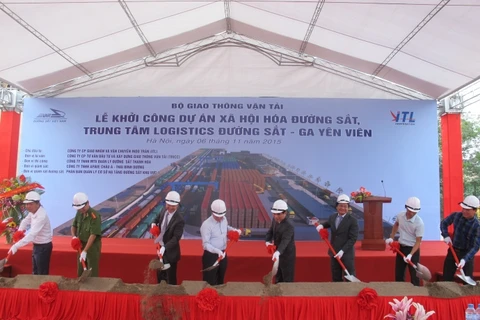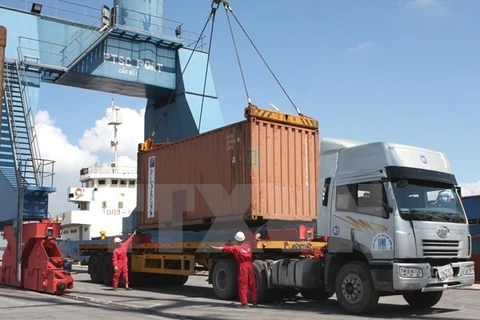Can Tho (VNA) - The Mekong Delta will house two second-class logistics centres by 2030, spanning a total area of 100 hectares to serve regional localities like Can Tho, Hau Giang, Kien Giang and Soc Trang.
They are among 18 logistics centres, including three first-class and 15 second-class, to be built across the country between now and 2020 under the national logistics centre development plan.
Nguyen Phong Quang, deputy head of the Steering Committee for the Southwestern Region, said the committee will continue realising regional programmes and targets, including the acceleration of the establishment of logistic centres.
He suggested the Government instruct ministries and centrally run agencies to help the Mekong Delta construct the logistics centres while offering incentives to domestic and foreign investors in the centres.
Can Tho has been selected for the construction of the centres. Other satellite logistics centres will be built in other localities to form a full logistics system that meets regional requirements.
Pham Chi Bac, Deputy Director of the provincial Department of Industry and Trade, said that because it is located in the centre of the Mekong Delta, Can Tho has favourable conditions for trade and service development. It can connect the satellite logistics centres.
Accordingly, a logistics centre will be built in the Cai Rang Industrial Park on a site of 70.5 hectares.
The location allows easier access to the Cai Nui International Seaport, the Can Tho International Airport, projected railways and industrial parks across the city as well as in other localities in the region.
According to Pham Anh Tuan, Deputy Director of the PortCoast Consultant Corp, up to 62 million tonnes of cargo is expected to be handled at regional seaports by 2020. The figure is expected to reach 200 billion tonnes in 10 years.
The logistic centres will help tighten links between the Mekong Delta and import-export markets worldwide.
Le Hoang Linh from the Tan Cang Sai Gon Corporation said the Mekong Delta has a coastline of more than 700 km, and rivers and dykes stretching over 28,000 km, of which more than 23,000 km are exploitable, accounting for 70 percent of the country’s total waterways.
Aware of the region’s substantial potential for logistics development, the Tan Cang Sai Gon Corporation has provided waterway transport logistics services connecting the corporation’s seaports with ports across the region.
Presently, four ports are able to receive containers, he said, adding that more ports will be built in order to provide better logistics services, thus attracting more investors to the region.
Le Duy Hiep, Vice President of the Vietnam Logistics Business Association, highlighted goods owners, infrastructure, logistics service suppliers, legal institutions and personnel training as important factors to improve the efficiency of logistics services.
He suggested goods owners who are importers and exporters, plants, entrepreneurs and producers hire logistics companies and utilise local ports.
The region should outline policies to attract logistics companies that perform well while training human resources to work for goods owners, State management agencies, logistics companies, ports and warehouses, he said.
The region must devise the most comprehensive and suitable logistics development model through organisations specialising in the field, he noted.-VNA
























